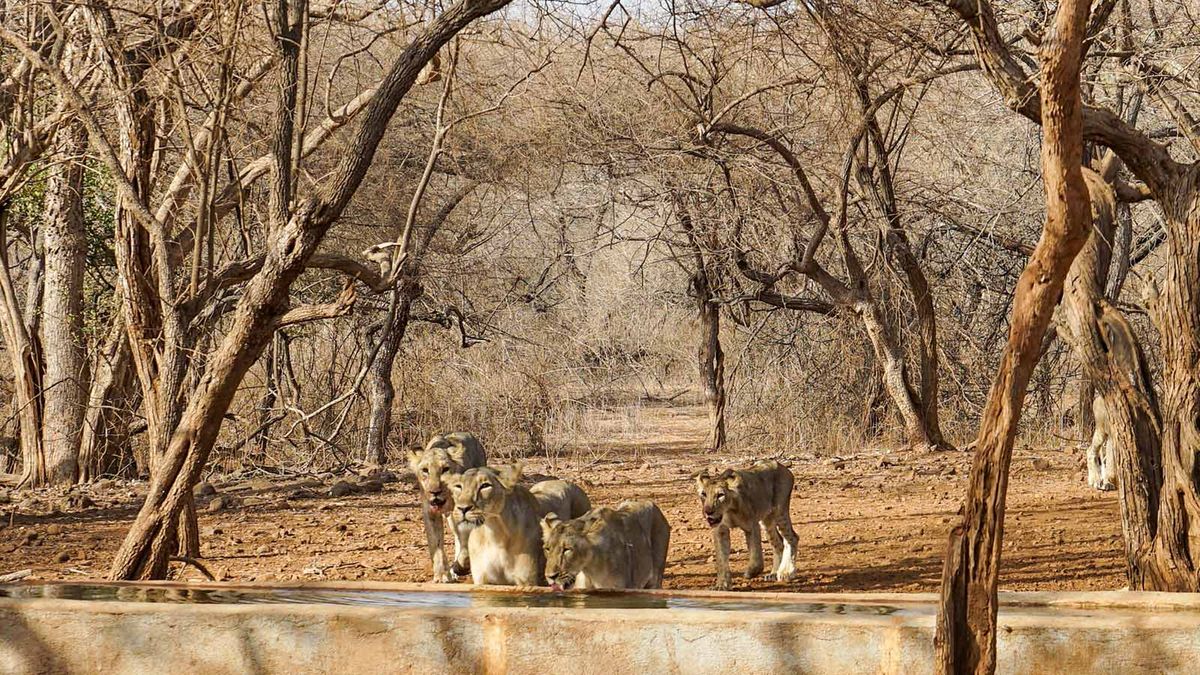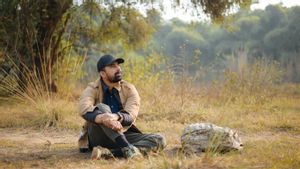Being a travel writer and a lover of the natural world, Sasan Gir in Gujarat’s Junagarh district had been on my wish list for a long time. Thanks to the pandemic, I started traversing a lot more of India, especially the jungles that rouse both wonder and mystery. In January this year, I finally happened to visit the Gir National Park and Wildlife Sanctuary where game drives are a primary attraction, and for a valid reason. After all, Gir is the last domain of the Asiatic lion and the only place in the whole of Asia where you can see the fierce predator roaming in the wild. However, the anticipation and enthusiasm that comes with spotting and photographing the big cats in their natural habitat is only a part of the experience. The essence of Gir lies in its conservation success story credited to the peaceful coexistence of humans and animals.
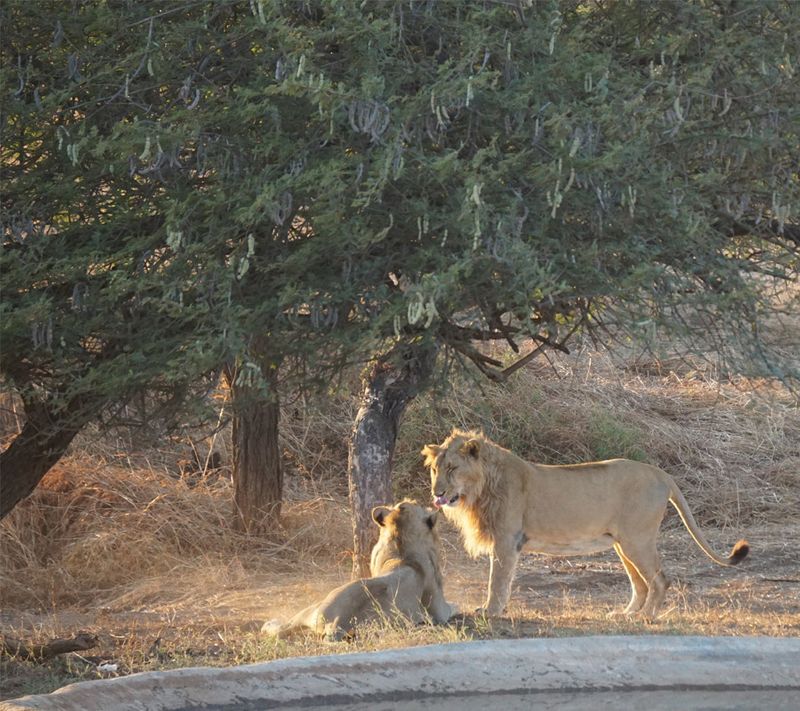
So, here we are on our early morning safari with Akram, a local from the African-origin Siddi community, and our guide provided by the Forest Department. Minutes after entering the national park in our gypsy, we see a man dressed in traditional white clothing—a pair of white chorni (pyjamas) and a white shirt—holding a cane and casually roaming in the wilderness with his herd of buffaloes. Considering we are given strict instructions about not getting out of the jeep once we are on the designated route, we are shocked to see this man sharing the lion's territory so nonchalantly. On curiously inquiring about the man, Akram points out that he is one of the Maldaris, a semi-nomadic, pastoral community that shares a symbiotic relationship with the lions. "Maldharis live deep within the forest and it's quite normal for them to have a lion pass through their backyard," says Akram. We are still in disbelief and want to know more about these intrepid people.
The Maldhari way of life
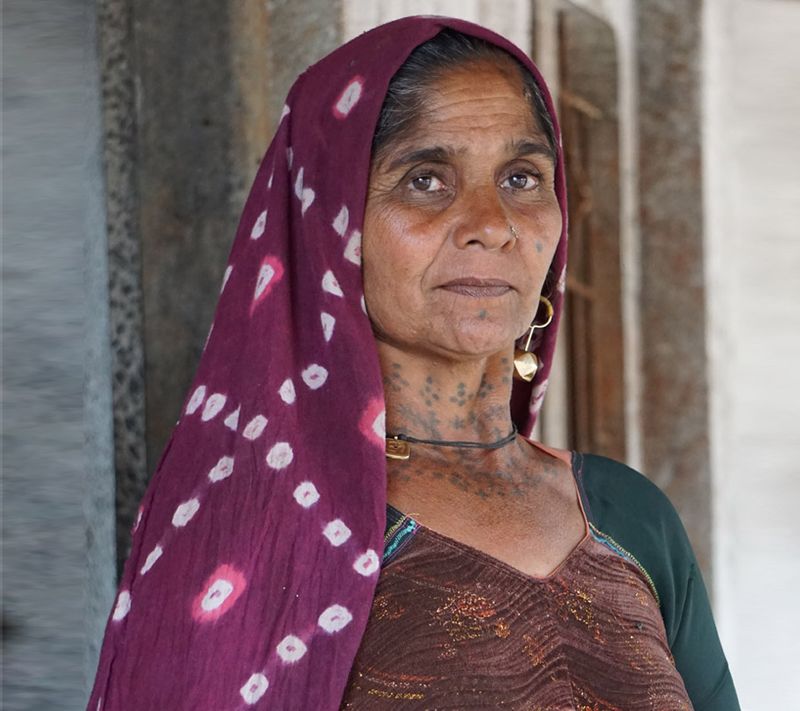
We decide to visit one of the Maldhari settlements in the company of Shuklaji who is the community development head at Woods at Sasan, a boutique property that lays emphasis on mindful tourism and curates experiences that help you build a deeper connection with the place and its people. We are driving through the dense jungle to reach Gadakiya Ness. Ness is a cluster of thatch and mud hutments inside the forest and every ness comprises around 10 to 12 settlements. It is around 3 PM when we arrive at Rambhai Kodiyatar's humble abode. The winter sun is shining and the air is cool and crisp. There are around 35 odd family members and 60 cattle living here. While some male members of the family are out in the jungle to feed the cattle, women and children come rushing towards our jeep, wearing smiles on their faces. They quickly bring us a charpai (cot) to sit on.
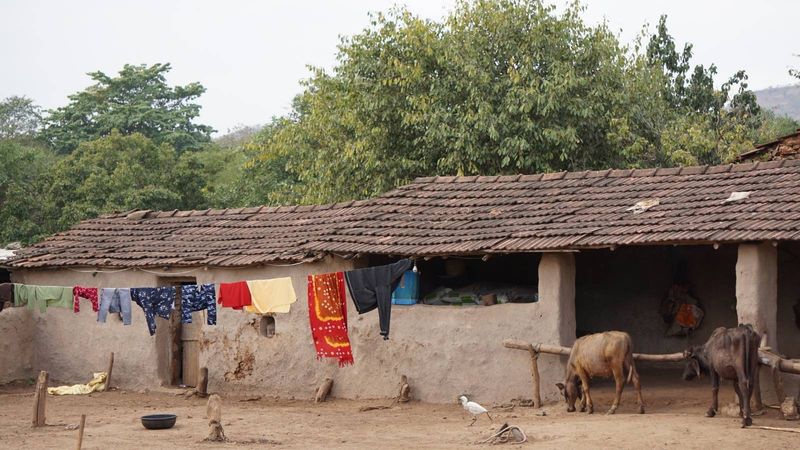
In Gujarati, ‘mal’ refers to cattle and ‘dhari’ means owner. Hence, Maldhari means ‘owner of animal stock’. The Maldharis earn a living by selling milk, milk products as well as other forest produce in towns. "We have been living in the forest for generations. Our lives largely revolve around nature. Perhaps, this is why we share a special relationship with wild animals too. We never really try to harm them and vice versa. Usually, the cattle smell the presence of lions from a distance and give us an alarm call. Once in a while, our livestock is eaten by the lions. However, the government provides us with monetary compensation for the loss," says Rambhai who is back after performing his daily chores.
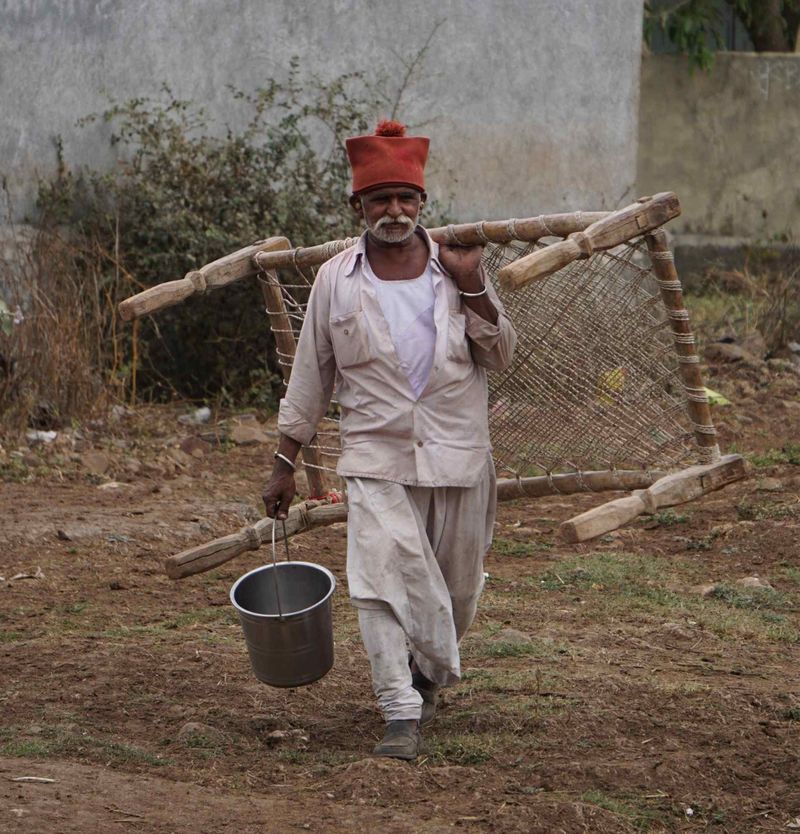
Since buffaloes, cows and goats are not fast runners, it becomes easy for the lions to feed on cattle. Other animals in the wild are quick on their feet. Despite regularly losing their animals to lions, Maldharis continue to inhabit the Gir forest. Six generations of Maldharis have been living in the Gir forest and they have refused the government’s decision to relocate them to the city. "We do not mind if the lions hunt down the cattle but we do not wish to be shifted elsewhere. In cities, people pay taxes to the government. In forests, we pay our taxes by letting the lions hunt our cattle," adds Rambhai.
It's tea time in this Maldhari household and they are kind enough to pour us some piping hot chah in a saucer. Over chuskis of chah, they share more about their lifestyle. "On most days, all the family members get together in the common courtyard for dinner between 6 to 6.30 PM. We enjoy our simple meal and confine ourselves to our houses. All movement must stop after 7 PM. This is not only because lions and other inmates of the forest roam free in the jungles post the sunset, but also because there is no electricity in many houses," adds Rambhai.
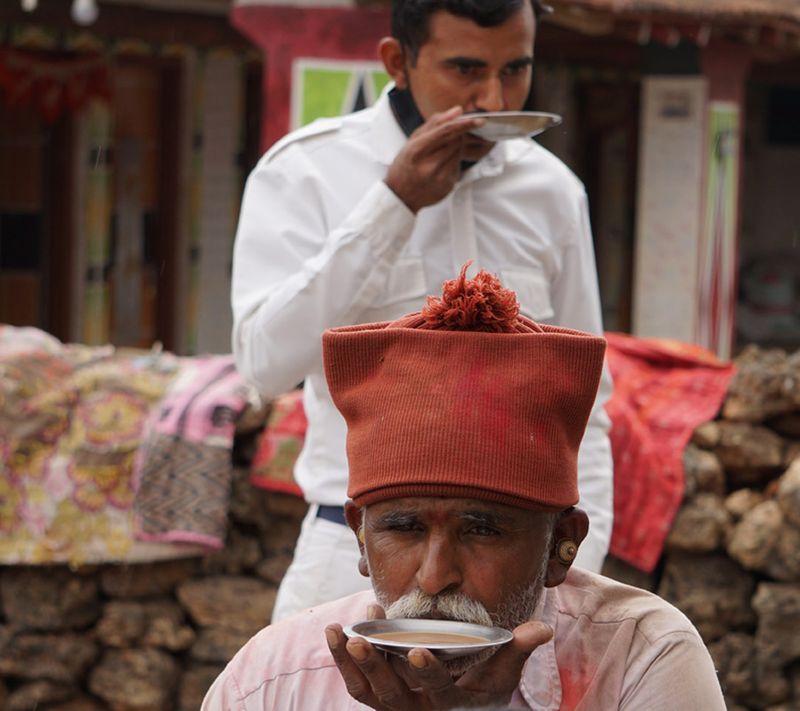
The Maldharis revere the lion as Lord Narsimha, a fierce avatar of the Hindu deity Vishnu, who incarnated as part lion and part man to destroy evil. The King of the Jungle is also a vehicle of Goddess Chamunda. "I live inside the Sasan sanctuary with my family and we have more than 100 cattle. Earlier, we would traverse long distances on camels to sell ghee. However, now we mainly sell milk as it is much in demand," says Jasubhai Chandera Mandabhai, a Maldhari from Dadhiya Nes. Maldharis believe in living in harmony with nature. When out grazing their livestock, they keep an eye out for ill or injured lions as well as other activities in the jungle and keep the forest rangers and trackers informed.
"I have been a van mitra (friend of the forest) for a very long time and will continue to perform my duties towards wildlife conservation. It is my responsibility to make sure the lions in my vicinity are safe. Moreover, whenever I see anyone littering the jungle, hunting an animal or pelting stones at them, I immediately inform the forest department about the same. This is my way of doing my bit for protecting the wilderness in Gir," adds Jasubhai.
There have been instances where maldharis have been attacked by the lions but this doesn't deter them from living in the jungle. "My brother was recently attacked by a lion but then he is completely alright now. He had a minor injury on his shoulder. We strongly feel that we can survive because of the lions. There would be no tourism in Gir if there were no lions. The boost in tourism here has led to an increase in the demand for milk, helping us make a living. We love the jungle life and it would be tough for us to live elsewhere. We are so used to the pure air and greenery around us," adds Jasubhai.
Saving the Asiatic lion
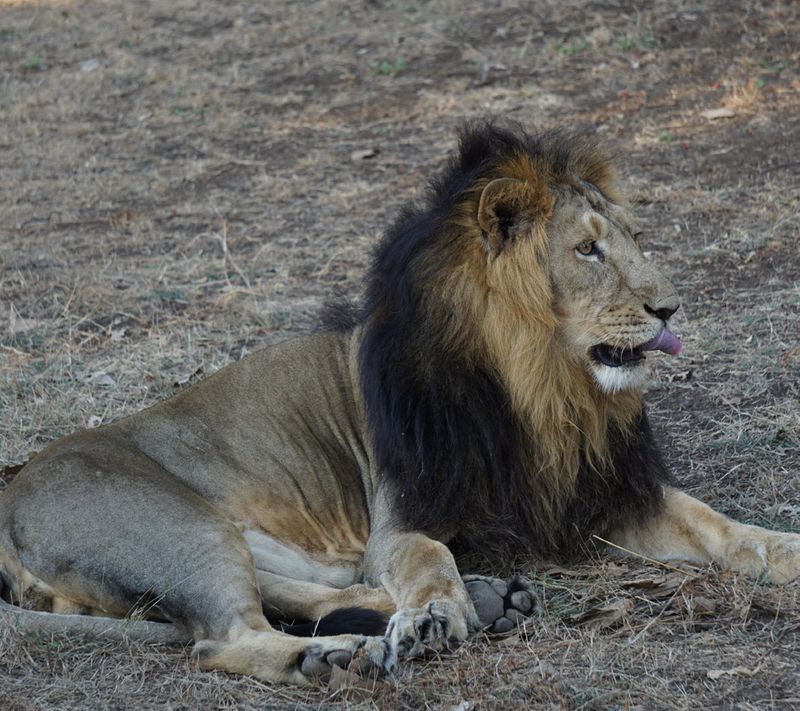
Wildlife experts credit the community’s attachment with the Asiatic lions as an important factor behind the conservation. Moreover, since Maldharis are vegetarian, there is no competition between humans and animals for food. The peaceful association of man and animal has increased the count of Gir lions, which were declared critically endangered in 2000, to over 674 as per the data from 2020. Today, the lion territory is spread as far as Rajkot, Bhavnagar, Palitana, and Porbandar.
Another set of people working hard to increase the population of lions in Gir is trackers. They are employed by the forest department and are closest to the lions. You will see them surveying the jungle on their bikes or foot, keeping a watch on the lions, and rescuing injured animals. "I have been venturing in the forest since I was a child. I didn't need any formal education to understand animal behaviour. I am the third generation in my family working as a tracker in the jungle. It's a 24-hour job as we could be asked to report at any hour. Over the years, I have witnessed ample lion fights and I find the scene spine-chilling even today. As a tracker, my primary focus is rescuing the animals and reporting their safety. I have always believed that an animal isn't a man-eater. We make them man-eaters by committing silly mistakes. For example, some villagers discard strong-smelling items like fish and alcohol right outside their homes and, later on, blame the leopards and lions for attacking them. They do not realise that it was their careless behaviour that invited the predator, " says tracker DJ Pampania who is very passionate about wildlife and calls the jungle his home.
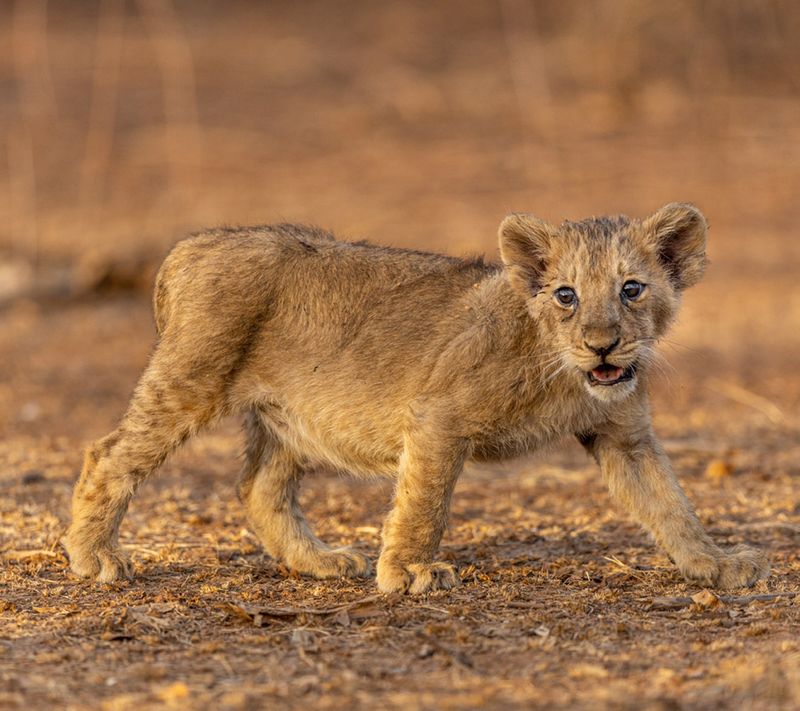
Pampania says lions are harmless compared to leopards and tigers. After all, the lion is a royal animal. "Lions do not hunt unless they're hungry or suspect danger. Animals understand our walk and approach in a flash. Moreover, they wouldn't charge at you without giving you prior notice. A lion's tail and its attacking position will tell you whether it is likely to attack you," says Pampania who has worked as a tracker for more than four years. "And even if a lion is taking the attacking position, never show him your back and run away," adds Pampania.
The human-lion bond in Gir is not only heart-warming but also eye-opening in many ways. It reminds us how we misperceive who and what animals are. As humans, we most often fear them or control them. Rarely do we try to be cordial to the creatures who are a bridge between us and the beauty of all that is natural.
"Lions are such an important part of my life. I recognise all the lions living in my locality and when I don't see them for three to four consecutive days, I start wondering whether they are safe and alive. So, I head out looking for them,” says naturalist Aslam Sodha who has had several encounters with the lions. “When you're living so close to the jungle, animals become a part of your everyday life. Knowing they are keeping well gives me immense happiness. During my initial days as an animal tracker, I was asked to approach a lioness and direct her to a certain spot by thumping my stick. As soon as I went close to her, she roared. I stood still and couldn't breathe. I was petrified and the stick I was holding in my hand fell. I lost my senses completely until another tracker came and shook me. That's how my relationship with the lions began. Lions might take some time to befriend you but once they know you, they will never forget you. They quickly recognise their protectors," adds Aslam.


